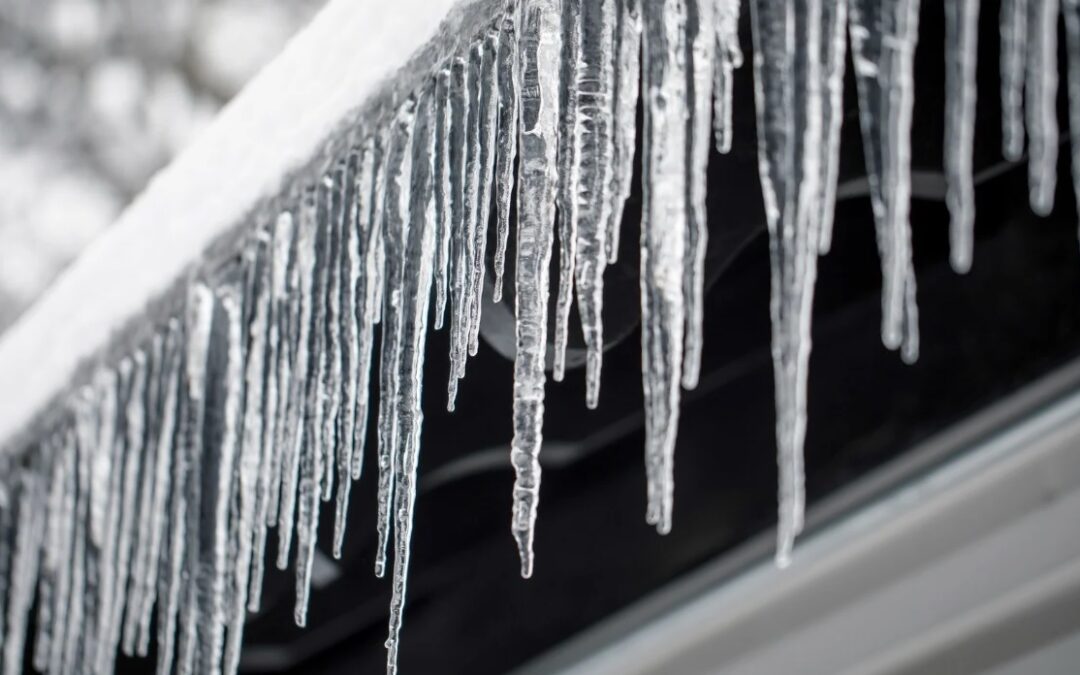Roofs are particularly vulnerable during the winter months. When water on your roof freezes, it may do significant damage to the structural integrity of your house or commercial facility. There are various steps you can take to safeguard your roof from the effects of winter weather. It is essential to understand the most prevalent cold weather roofing problems and how to avoid them properly, maintain your property, and prevent roof leaks.
Leaks:
The presence of leaks is a regular occurrence, particularly on older roofs. However, you can prevent leaks from occurring on your roof regardless of whether it is brand new or decades old. Several winter concerns may result in leaks – and numerous things you can do to keep your roof from leaking.
Flashing Deterioration:
Leaks are particularly prevalent in the areas around vents and chimneys, with numerous gaps and fractures. When it comes to these locations, the roof is covered by little pieces of metal called flashing. Proper flashing installation is crucial since the improper installation will result in leaks that continue to increase over time.
How to avoid:
One method of preventing roof leaks is to inspect the flashing at the beginning of each season to verify that it is adequately sealed and sealed tight says Tony from Old School Group. Even correctly constructed flashing will begin to deteriorate with time, making regular inspections of your roof even more critical as your roof grows older and more complex. In the fall, inspect your roof with your roofing contractor before the winter snow and freezing rain arrive on the scene. For your roofing contractor to check and repair the flashing, you’ll need to give him plenty of time.
Ice Dams:
We have our fair share of ice in Massachusetts, even though it is not typically snowy (with the occasional snowfall). An ice dam is an issue that happens when hot spots in the attic allow the higher portions of an iced roof to melt while the lower parts of the roof continue to be frozen. Melting ice and snow from the higher region of the roof travels down to the cooler, lower sections of the roof, where it re-freezes, resulting in ice buildup in the gutters and downspouts.
Eventually, the ice builds up behind the shingles and seeps through the sheathing beneath the roof. As water collects behind the dam, it is more likely to seep into your home through fractures and fissures in the roofing material, causing significant structural damage.
How to avoid:
It is a complex topic since several elements might contribute to forming an ice dam. For example, poor ventilation and insulation in the attic can result in “hot spots” (pockets of warmer air in the upper areas of the attic), which can provide the ideal circumstances for forming an ice dam in the roof of the house.
The formation of icicles identifies ice dams in the gutters in the presence of leaks inside your home. Make an appointment with your roofing contractor to correct your insulation and ventilation to avoid future ice jams. If you suffer an ice dam in your house, it is crucial to repair the leak as quickly as possible to avoid more damage.
Icicles:
Icicles are another issue that can arise on rooftops during the winter months. Icicles are a severe threat to both people and pets; gutter and downspout clogs are the most common cause of these problems. In addition, their enormous weight might cause damage to the roof and gutter system.
To eliminate icicles in your gutter, you should schedule frequent gutter cleaning and gutter inspections to ensure that rainwater can escape from your roof as quickly as possible.
Tree limbs may be a threat, especially if you live in an area where high winds are prevalent. If you have mature trees on your property with overhanging branches, your home may be in danger of being destroyed. In addition, broken tree branches can cause damage to the structure of your roof, or perhaps your entire house, if they fall on it.
How to avoid:
Trimming any branches within six feet of your roof is the most effective approach to protect it from falling tree limbs. Trees that are hanging over your roof should be pruned back. For this undertaking, it is recommended that you get expert assistance. Trimming tree limbs may be pretty dangerous, especially if the stems are substantial and heavy.
Roofing Maintenance in the Commonwealth of Massachusetts
Winter may be a difficult time of year for your roof, but Stroitelstvo provides monthly roof maintenance to provide your peace of mind throughout the season. Please call us for an inspection if you would like to learn more about how you can protect your roof from damage this winter. Also, if you have a leaking roof, contact us for a free consultation.
Design. Craft. Renew are the three words that come to mind when we think about Stroitelstvo. We have extensive expertise with all sorts of roofing systems and can give our customers the appropriate roofing design and selective craftsmanship to renew their assets. We encourage consumers interested in sustainable building to contact us for a free consultation. Since 1981, Stroitelstvo has installed thousands of square feet of roofing materials throughout the Triangle, including metal, slate, TPO, EPDM, and other types of shingles. Services include residential and commercial construction and unique architectural metal fabrication, and historic repair.





